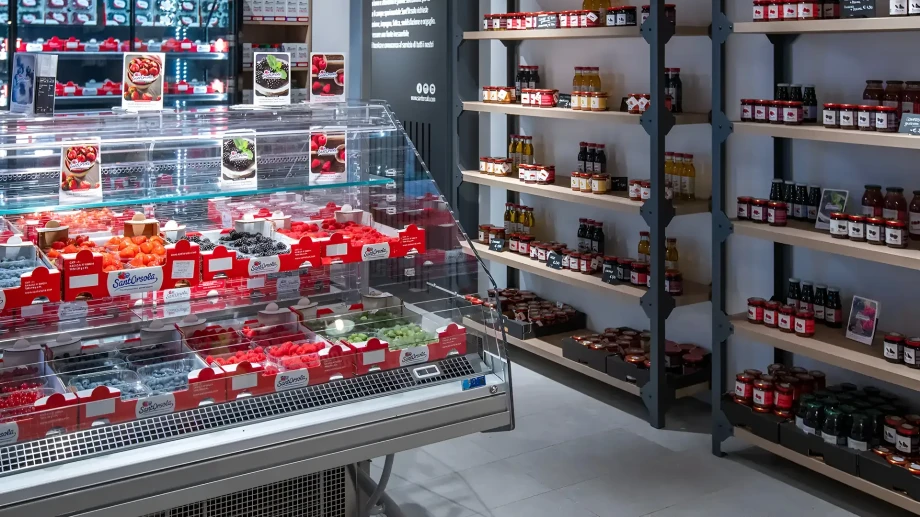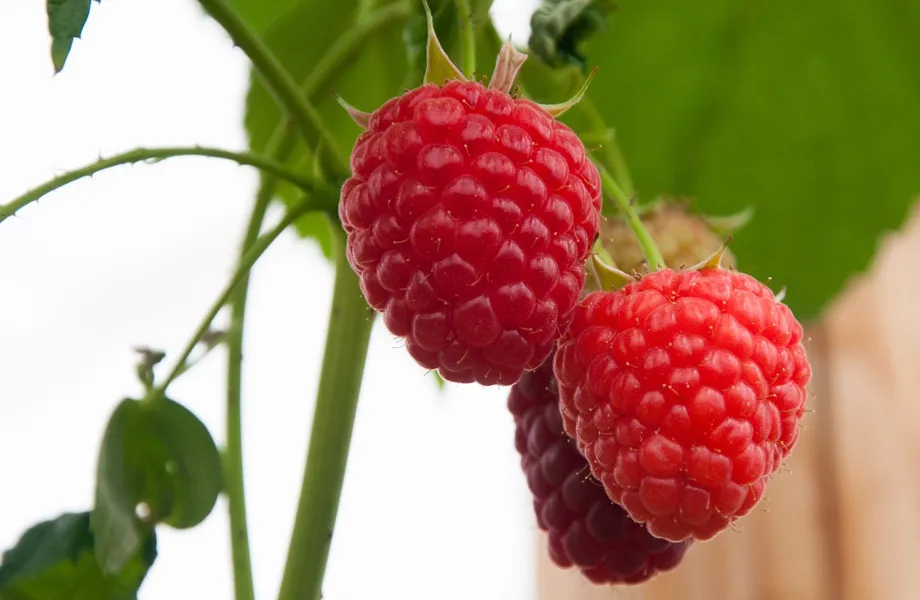Production, taste, zero residue, packaging, communication. The exclusive interview with Nicola Leonardi, commercial director of the Italian co-operative Sant’Orsola, provides a comprehensive overview of the world of berries.
How many regions are Sant’Orsola producers located in and how is the production base evolving?
Sant’Orsola producers are spread across seven Italian regions: Trentino, South Tyrol, Veneto, Lombardy, Marche, Calabria, Sicily, totaling approximately 500 hectares cultivated with blueberries, raspberries, blackberries, cherries, currants, and strawberries. 60% of the production is in Trentino, but southern Italy, especially Sicily, is growing, allowing us to ensure Italian products, such as raspberries, for almost 12 months a year and blueberries from March to September.
Sant’Orsola has always focused on the taste quality of the product: is this strategy appreciated by buyers and consumers? Especially when facing imported products at lower prices?
Large distribution chains have a preference for Italian fruits - which generally have superior taste characteristics compared to imports - and recognize this value. Being able to guarantee a wide range of Italian offerings allows us to communicate effectively with our best customers, both in large organized distribution and in fruit and vegetable markets throughout Italy.
Is it only Zero Residue, or are you also focusing on other segments?
At the moment, the cooperative's strategy is exclusively dedicated to traditional and Zero Residue products. The latter is a project that significantly involves the entire Sant’Orsola supply chain with partners from all over Italy. We are in the fourth year with excellent results in Gdo customers and national markets who recognize the project and help us convey its values.
Packaging: what innovations does the market need? Is there a future for heat-sealed packaging in Italy?
We use heat-sealed packaging a lot for mixed packs or some special projects with paper packaging, which significantly reduces plastic usage. We see that customers and consumers appreciate this, and we aim to invest in this direction, knowing well that heat-sealed packaging requires significant investments and less production flexibility.
Innovations in packaging must always have a clear plan for field collection to avoid unnecessary waste and costs and ensure proper product visibility to the end customer, as fruits are first enjoyed with the eyes and then with the mouth.
Formats: Do you anticipate an increase in basket weights in the near future, moving away from 125 grams?
In 2023, 35% of Sant’Orsola's blueberries were sold in packaging of different sizes than 125 grams, and 8% of total sales were developed with mixed references with high service impact.
To best address these market demands, we have bulk harvesting of blueberries, reaching about 90% of the total product between southern and northern Italy regions, and we organize field harvesting directly with formats different from 125 grams. This working method allows us to limit waste and transfers, thus better protecting the quality of the merchandise.
Sant’Orsola is a brand that has invested heavily in communication. How do you assess the results achieved, and what are your future strategies?
The results are encouraging, considering that we receive daily requests from consumers throughout Italy who know our fruit and want to rely on our brand for their shopping. For spring 2024, we plan to renew our label by adding elements such as the Cooperative's founding year, effectively communicating the Italian origin of the product, and indicating a reference to the sustainability of our Rpet plastic packaging.
Communication in the store: can more be done?
Communication in the store is an excellent opportunity we have, and we will certainly invest in this direction thanks to our relationship with some of the best distribution chains we collaborate with. Our fruits have a lot to tell to be appreciated to the fullest.
More can and must be done; it will be up to us to engage our customers and propose interesting projects.
Nicola Leonardi, sales manager of the Sant'Orsola cooperative, commented also on the consumption trends of berries in Italy, as analyzed by the Italian Berry Gfk Report, during a comprehensive interview with Raffaella Quadretti (myfruit) for the period YE 31/12/2023. What are the prospects for increasing penetration in Italy, currently at 32% for berries and 25% for blueberries?
We see an increase in interest from consumers in central-southern Italy, which could increase overall penetration in the Peninsula.
The trend is growing, the challenge lies in ensuring stable quality for consumers even during import periods, especially with raspberries and blackberries.
Blackberries and raspberries are experiencing a growth trend after a period of decline in household spending: what are the prospects?
We have noticed that even for blackberries, offering non-standard weights such as 125g has been positively received by consumers. The varieties Sant'Orsola utilizes allow us to find the right balance between sweetness and product firmness.
They naturally lag behind raspberry and blueberry consumption, but over the past two years, we have seen total consumption grow positively.
There is still a need for further structuring of the winter period, during which almost all supply comes from Mexico via air freight, with an interesting development from Portugal, which has carved out a good space thanks to excellent quality.
The situation is different for raspberries as it is the second largest fruit by volume after blueberries and is confirming its good growth and stable quality. Sant'Orsola has the opportunity to offer the Lagorai variety, our own property, from producers in both Southern and northern Italy, allowing us to provide Italian consumers with a product almost year-round.
The crisis of red currants continues after the boom during the Covid-19 period: will the consumption crisis be temporary or structural?
From our observations, we see that red currant consumption is actually stable. Through our campaign efforts, we manage to cover a particularly wide supply calendar with the Italian Rovada variety. It is harvested in July, and we generally store it with excellent results until the following February.
The main interest comes from our customers in the fruit and vegetable markets who channel it through Horeca channels. However, we have also noticed interest from Gdo customers despite the high price, and a good sales response in the 200g format, which surprised us with the volumes expressed. The feedback on the variety is therefore positive.
Raffaella Quadretti (myfruit.it)










